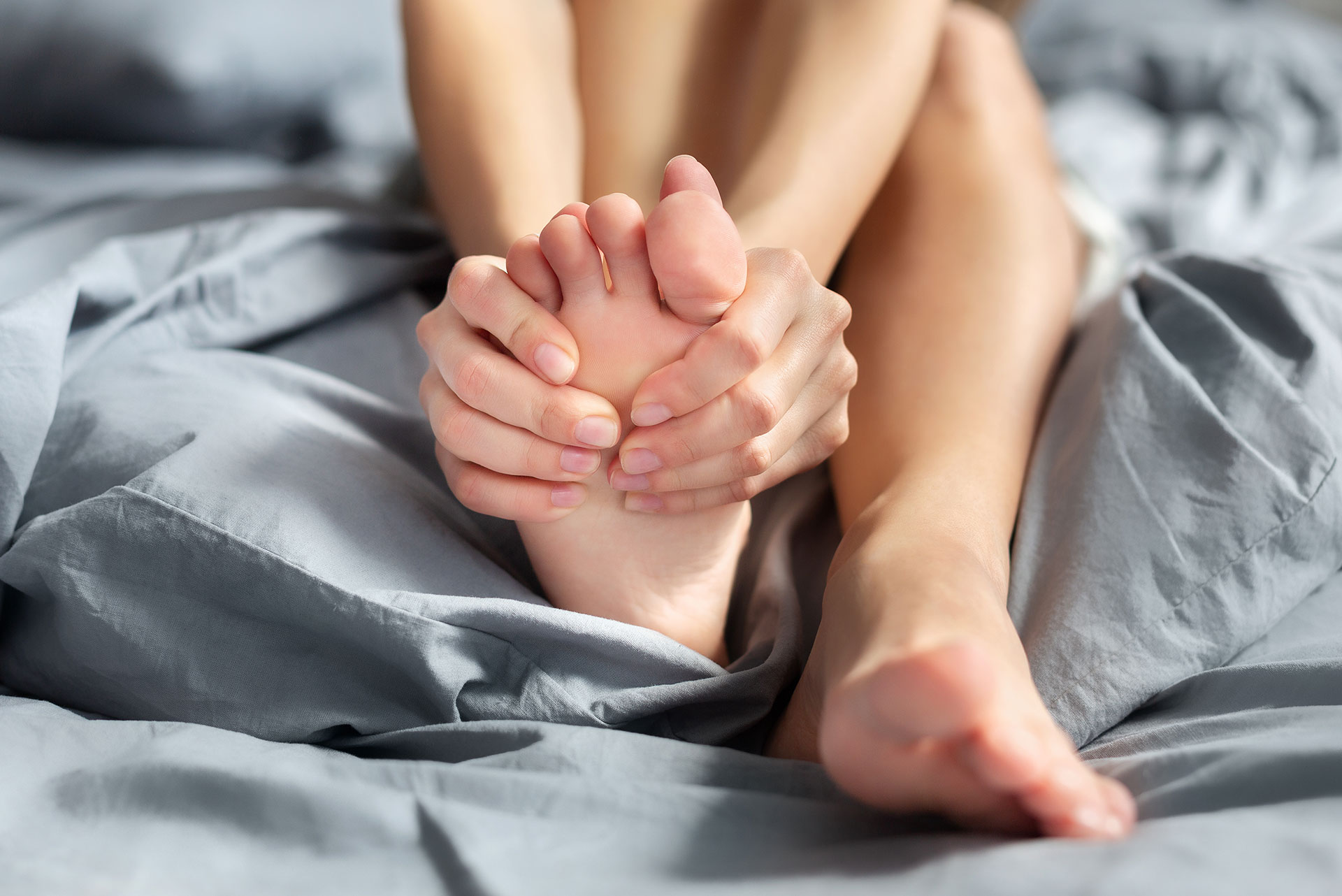
One of the most common complaints heard by podiatrists is that of heel pain. As the largest of the 26 bones in the foot, the heel is designed to perform many tasks. While the heel is equipped and able to handle heavy loads, too much stress can lead to problems. Read More
An ingrown toenail occurs when the edge of the toenail grows into and penetrates the underlying skin at the end of or side of the toe. While an ingrown toenail may not initially cause symptoms as it continues digging into the skin, it can produce increasing irritation, inflammation, redness and pain. An ingrown toenail can become so uncomfortable that wearing any shoes, other than ones with a wide, open toe may be impossible. With an ingrown toenail, extra skin, as well as other tissue, can begin to grow around the impinging portion of the nail. Furthermore, once the ingrown toenail penetrates the skin, an infection may develop with pus and worsening symptoms. Read More
Our office offers a wide range of treatments for skin conditions from treatment of athlete's foot to diagnosis, treatment of skin cancer, and skin conditions of the lower extremities.
Whether due to repetitive strain (overuse injuries) or a sudden accident (acute injuries), sports injuries to the stress-bearing lower limbs are a frequent occurrence among athletes and casual exercisers alike. Common sports injuries to the foot, ankle and lower leg range from blisters, contusions, and toenail trauma to turf toe, heel pain, Achilles tendon problems, sprains or strains, as well as fractures from repeated stress or sudden impact. Read More
Neuromas are nerve irritations that involve typically an enlarged or swollen segment of the nerve itself. In some cases, these neuromas can actually resemble a small grape in size and can cause significant discomfort to the patient. The individual with such an affliction will often complain of numbness, tingling, and/or burning sensations, which radiates into or involves two adjacent toes. Sometimes neuromas can be exquisitely painful. Most patients relate having to remove the shoe and rub their feet. In most cases, the neuroma will be located between the third and fourth digits of one foot with burning sensation involving the bottom of the metatarsal fat pad and the two involved toes. A second commonly involved site is between the second and third toes of the foot. The typical neuroma usually does not have redness, heat, swelling, or any apparent range of motion loss. Pressure on the bottom of the foot with manipulation of the involved digits will frequently produce the painful symptoms. Neuromas, generally speaking, do not go away on their own but usually require some form of professional care. Read More
One of the most common toe deformities seen by our office is a hammertoe. Most often attributed to wearing ill-fitting, tight footwear or high-heeled shoes that squish the toes into a bent position, a hammertoe can also be influenced by genetic factors, the result of a bunion, or caused by arthritis in the toe joint. Read More
One of the most common foot problems seen by podiatrists is a bunion. Typically recognized as an unsightly bump at the base of the big toe, a bunion is actually a deformity of the framework of the foot. It develops when the joint at the base of the big toe becomes unstable, causing both the bone and soft tissues to move out of place. The bunion’s characteristic bony knob appears on the foot just behind the big toe and angles outward as the big toe angles inward toward the smaller toes. Occasionally, a bunion may develop at the base of the little toe on the outside of the foot. This is known as a tailor’s bunion or bunionette. Read More
Neuropathy is a condition that affects the nerves in the body. Each nerve has a special covering and when that covering is damaged, the nerve doesn't function normally. A tingling sensation or a feeling of pins and needles may be a warning sign to the patient that their nerves are functioning abnormally. When the condition of neuropathy worsens, the patient may lose complete feeling in different parts of their body. Most commonly, neuropathy tends to affect the hands and feet. When the hands and feet become neuropathic, it is very difficult for one to carry out their activities of daily living. Read More
For people with diabetes even the smallest blister, sore, or cut on the foot can pose tremendous risks. Something as minor as an irritation from a small pebble in a shoe can quickly progress from a wound that doesn’t heal to a dangerous infection that can lead to an amputation and even a life-threatening situation. The statistics are alarming. Foot infections and their complications are the leading cause of hospitalization for diabetics. More than 60% of non-traumatic lower limb amputations occur in people with diabetes. Read More
